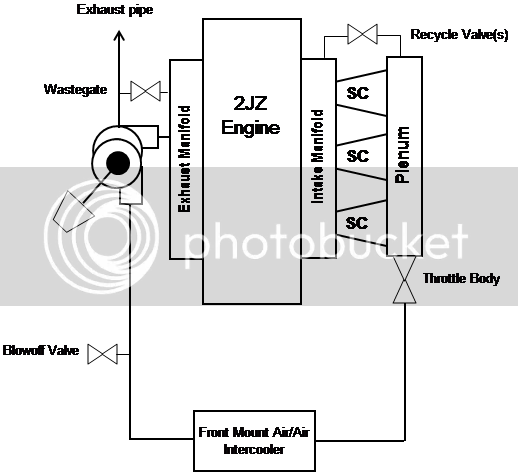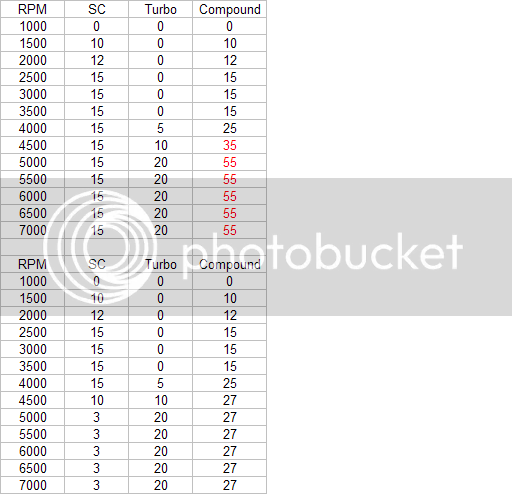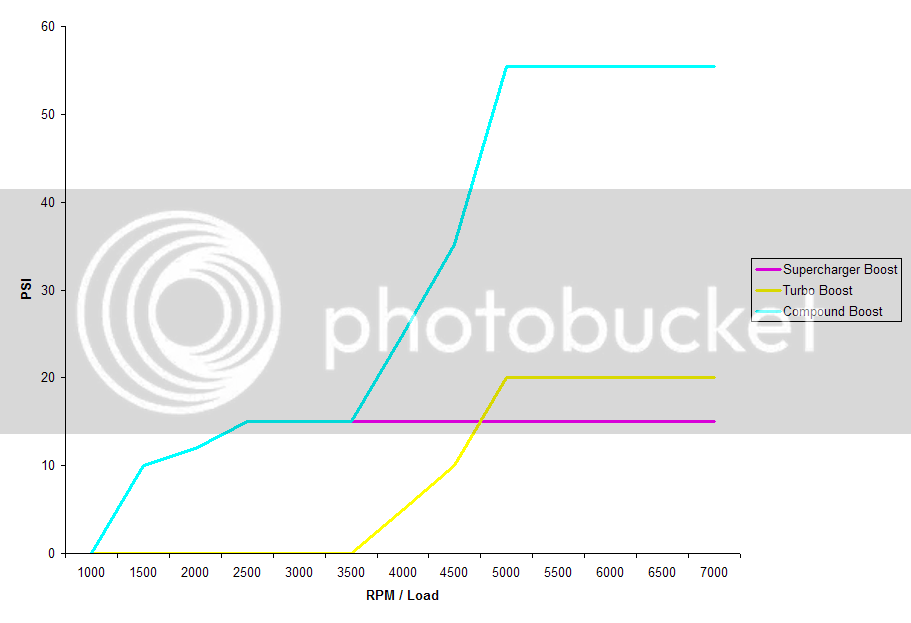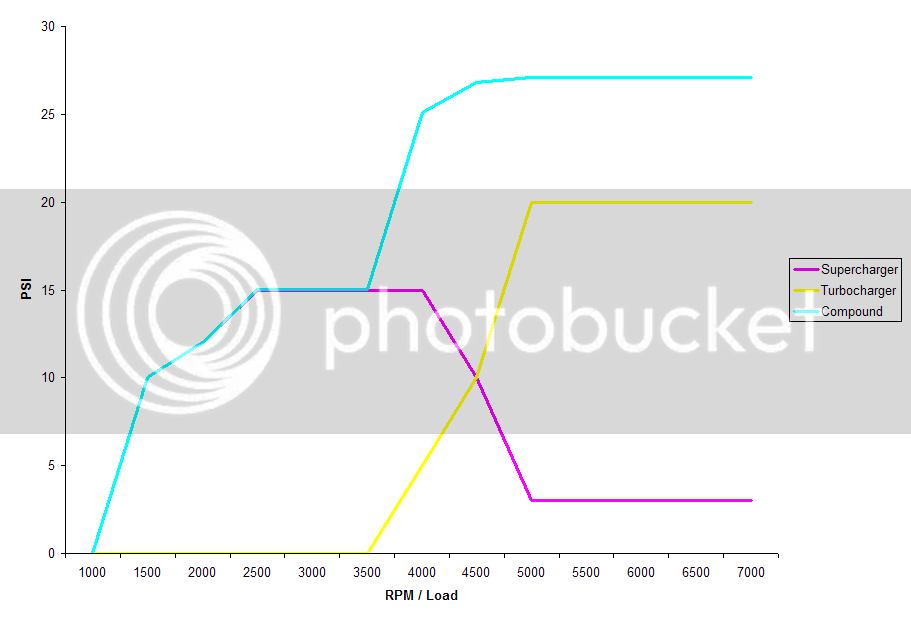I've been studying the "MR6 Compound Boost" project that Jeff Hartman, Corky Bell, Bob Norwood, and others did back in 2003 and 2004. This project was done with a 3.0l V6 Toyota engine, an M62 based TRD supercharger, and a range of turbos from a T61 up to a T76.
It appears they experienced compound boost levels being too high, and not generating the corresponding level of power. Other compound boost projects (Hellion kits, etc.) seem to have the same issues, so Justen's experience of losing top end power with the compound setup having 1.5 times more boost pressure than a turbo-only setup wasn't an anomaly after all.
What I haven't found as yet, is a good overall reason why this occurs.
What I'll try to do to minimise this, is to not get into the compound boost situation at all, hopefully by modulating the superchargers' bypass (recycle) valve(s), once the turbocharger is up on boost. In other words, swapping 15 psi of supercharger boost for 15 psi of turbo boost, and simply blowing through the superchargers and their recycle valves.
Once the boost is being produced solely by the turbocharger (perhaps with some residual boost coming from the superchargers), it'll then be controlled by the wastegate in the usual way.
Here's a schematic of the system as I envision it:

And a table showing the dangerous levels of compound boost that will result if there is no control over the supercharger boost (the upper table is without control, the lower table shows what happens when the superchargers are running in bypass or recirculation). Note these tables don't take into account the drop in density ratio - they're simply a quick calculation of compound boost.

And a graph showing the runaway compound boost pressure if the supercharger recycle valve isn't used:

And running the superchargers in recycle from 3500 RPM onward (or whenever the turbo starts making boost):

Hopefully, another very important side benefit of running the superchargers in recycle at the top end, will be the regaining of their parasitic losses, which I've calculated to be close to 50 HP gross, of which we should gain around 40 back (we'll still have all the frictional losses of driving the jackshaft, belts and superchargers, but as they won't be moving any air, no compression work will be done.)
Unknowns at this point are:
1) What size turbo to use? I'm envisioning one with a large turbine, and big A/R ratio, but only a small to medium size compressor, like a T61 or T66. The goal is very late spool, and only modest boost pressure, so I'll need to find a switched on turbo vendor who can think outside the normal box for this setup, as it's nearly the inverse of what most people want in a turbo.
2) What happens to the system during transitions, ie will it switch from superchargers to turbo and back again smoothly? This will probably take some fine tuning of the controllers.
3) Turbine inlet pressure (exhaust backpressure). We'll monitor this with an eye to changing out turbine housings to keep it under 2:1, to avoid excessive "backup" of the system as Justen suspects happened with his twincharge setup.




